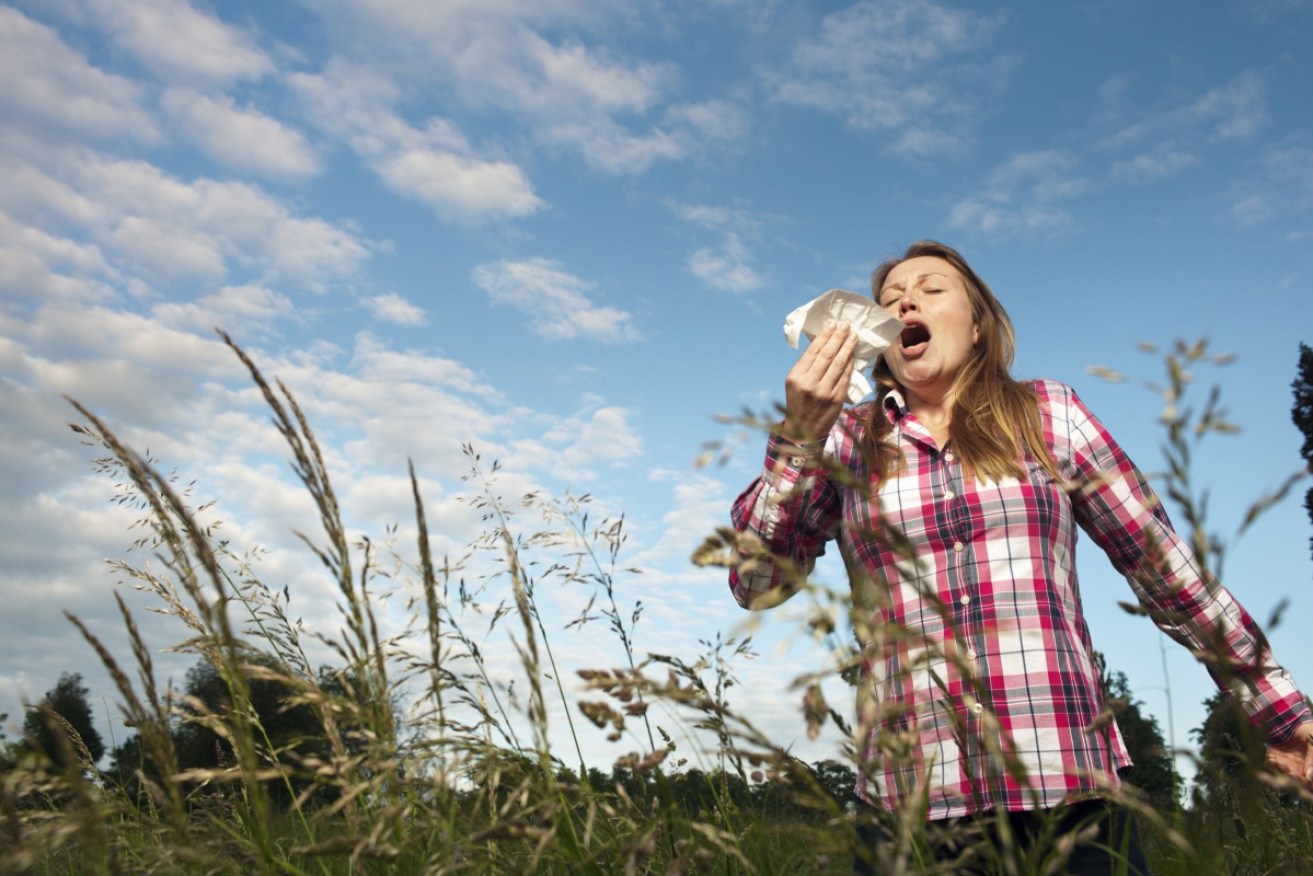Satellite map highlights pollen dangers in the air

National project aims to develop an early warning system for asthma sufferers. Photo: Getty
Australian scientists are mapping grass pollen levels across the country from space, in a bid to develop an early warning system for asthma sufferers on high-danger days.
A world-renowned geospatial ecologist who has worked with NASA, Professor Alfredo Heute from the University of Technology Sydney (UTS), is using 40 years of satellite images to map high vegetation areas and pollen release.
“If we can collect what the satellite sees at pollen traps, we can extend the information outward to cover an entire city, and the nation,” he said.
“We would know for example where grass would be seen to be most pronounced, most prolific, and we also know the timing because the satellite keeps track of various properties about the vegetation and how it changes.”
Darker green zones in the graphic above show areas of higher pollen levels in Australia over several years.
The national project has taken on a new sense of urgency since Victoria’s recent fatal thunderstorm event which claimed eight lives.
Queensland University of Technology’s Associate Professor Janet Davies is leading the team mapping grass pollen counts.
“Changes in the greenness of the grass cover indicate level of pollens in the air,” she said.
“If we can integrate that data better with other factors like wind direction and rainfall, we will have a much better capacity to predict when grass pollen in going to be high in different parts of the nation.”
The work is part of a two-pronged attack to tackle the growing medical burden of allergic diseases which are estimated to cost the nation $30 billion a year.
Associate Professor Davies said pollen exposure has dramatically increased since the 1960s.

A microscope image of a pollen grain bursting, releasing hundreds of small particles which can trigger allergic reactions. Photo: QUT
Climate change leading to early onset of spring: professor
Co-researcher and climate change expert from Macquarie University, Professor Paul Beggs, said the problem was getting worse.
“The world is getting warmer so we are living in higher temperatures than we use too,” he said.
“The basic cause is increases in carbon dioxide levels, and both those things really influence how plants grow and also their production of pollen.”
Professor Beggs said warmer temperatures caused plants to flower earlier.
“So people get exposed to pollen earlier,” he said.

Professor Paul Beggs from Macquarie University says climate change is making plants flower earlier. Photo: ABC
He said the amount of allergen in pollen grains was also increasing, making it more potent.
The team, through its AusPollen project, also collects pollen levels daily from monitoring stations in major cities, then uploads the data into an app which rates exposure levels from moderate to high.
Associate Professor Davies said satellite mapping would help improve accuracy.
“It is about saving lives,” she said.
Asthma is responsible for around 400 deaths in Australia every year.
-ABC








